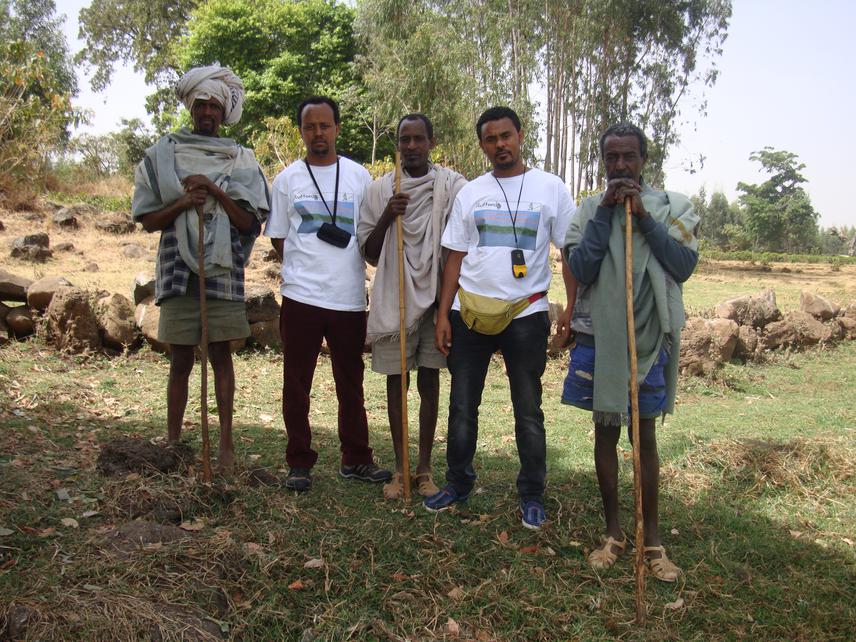Addisie Yalew Geremew
This project aims at integrating genetic diversity and local ecological knowledge for conservation and sustainable use of papyrus swamps surrounding Lake Tana through community participation.

After discussion with local people around Infranz.
Globally, wetlands are among the most biologically productive ecosystems which provide various ecosystem and provisional services. Yet they are threatened by anthropogenic pressures that speed up ecological changes and biodiversity loss. Humanity is trailing links in the net of life that afford ecosystem services and forfeiting opportunities to understand the future of the living world (MA, 2005). In Ethiopia, the productivity and repository roles of papyrus swamps for holding important species has attracted a surfeit of human activities ranging from continual exploitations to destructive ventures. Concomitant increase in land-use activities, climate change scenarios and papyrus harvesting are major factors account for papyrus habitat loss and degradation in the country represents a significant threat to biodiversity particularly for papyrus-reliant species. Conservation action is needed most urgently at wetlands around Lake Tana (Ethiopia), since populations of papyrus face to local extinction. In doing so, effective management of plant species and ecosystems require integrating knowledge on genetic diversity and local ecological knowledge (LEK) (Reza and Abdullah, 2010). Therefore, this study is intended to integrate genetic and LEK based data for conservation and sustainable use of papyrus swamps in Ethiopia using papyrus as model species.
This project focuses on four papyrus dominated swamps (Yganda, EInfranz, Ambo-Bahir and Selchine) in and around Lake Tana (Ethiopia), which vary in the extent of anthropogenic impact and hydrodynamics. Recent information on ecology, population dynamics, genetic diversity and structure, life strategy and conservation status of papyrus swamps/papyrus plant, following disturbance gradients will be extensively collected. Association between population genetic parameters and biotic and abiotic factors will be established. These will help to understand how populations are resilient to such factors and identify hotspots for conservation and restoration activities and enabling to explore adaptive genetic variation in long run. We will also assess and use LEK accumulated and embedded cultural adaptations within a context of long-term ecological changes of swamps as baseline information for conservation and restoration and development of policy guidelines and strategies for sustainable use. In doing so, informants (including fishers, elders, harvesters) living in the vicinity of swamps will be randomly selected to assess perception on papyrus regeneration, utilization, threats and local management practices. This project will fully engage in awareness creation programs to the local people and other stake holders with the aim to address conservation issues.
Ultimately, we will have an adaptation plan which could be used in identifying conservation delivery options for the wetlands under study and enrich the national conservation strategy through integrative approach. Upon identification and delineation of buffering sites conservation and monitoring will continue. Meetings will be held with local community to discuss the implications of the project’s results and explore ways to apply conservation and management activities.